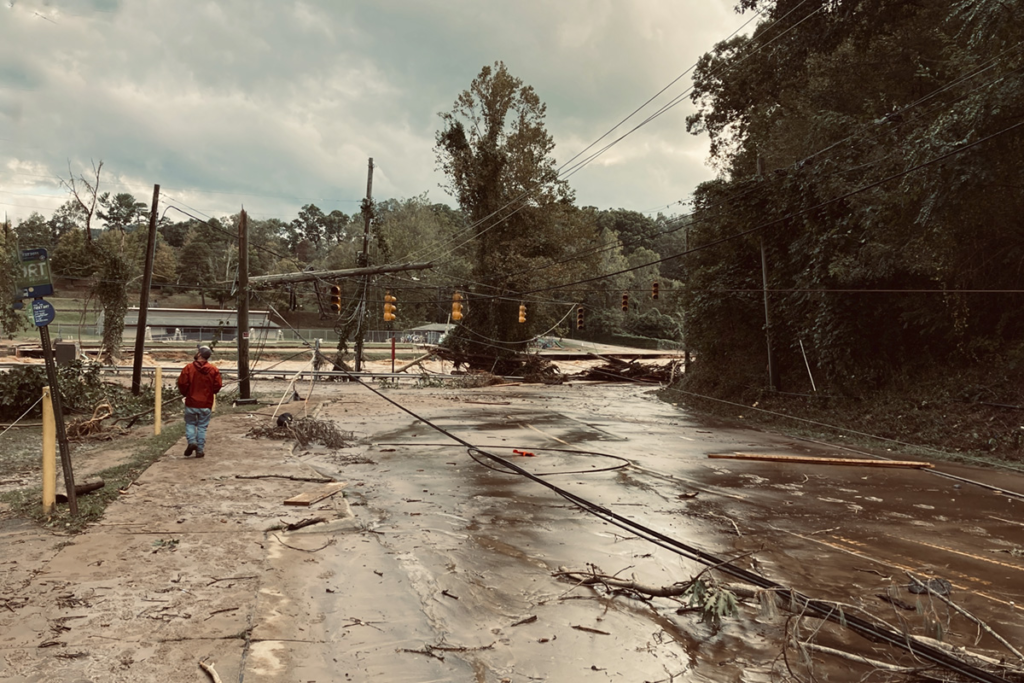*
EarthTalk®
From the Editors of E – The Environmental Magazine
Dear EarthTalk: Have extreme weather events in places like Asheville, NC made people rethink where they consider to be good “climate refuges” as the world warms? – K.L., Raleigh, NC

The concept of the “climate refuge,” or a location relatively unaffected by extreme weather phenomena, arose in response to the growing frequency of tornadoes, hurricanes, flooding, droughts and other disasters. According to the Global Climate Resilience Ranking, the U.S. has one of the world’s largest numbers of these “refuges” as a result of the nation’s geography and ability to efficiently protect and rebuild assets and infrastructure.
Experts have long predicted that these least climate-affected communities lie in the interior Northeast, Midwest and Rust Belt. Yet many have also viewed areas in the inland South as meeting the qualifications of climate refuge. However, these communities have increasingly dealt with their own disasters. Vermont, ranked at the bottom of the climate risk index, is still recovering one year later from the Great Vermont Flood of 2023 which caused several fatalities and roughly $2.2 billion in damage.
In late September 2024, mudslides in the Appalachian Mountains of Tennessee and North Carolina took dozens of lives and caused horrific damage. Asheville, NC, one of the hardest hit cities, has been one of the many “refuge” destinations for Americans moving inland from coastal areas, citing rising sea levels and heightened insurance costs as affecting their decision.
As the reach of disasters grows, experts push for investment into the states comprising the Rust Belt, interior Northeast and northern great plains. These fairly temperate states are located far from warming oceans, and are ideal geographically. However, there are other challenges to these “havens.” Much of the Rust Belt struggles with high poverty rates and would require significant aid and investment to support a large population influx. But as the effect of extreme weather in the South, West and exterior Northeast regions have escalated, so has federal and private investment. In late September, the Energy Department closed a $1.52 billion loan to revive the shuttered Palisades nuclear plant in Michigan. And the tech giant Micron Technology Inc. opened a 2022 chip plant in central NY, creating an anticipated 50,000 jobs.
The increasing reach of natural disasters across the U.S will likely shift the public’s idea of a “climate refuge” upwards and inwards. But while these regions may offer greater refuge from climate-impacted disasters, the idea of a completely immune “haven’ is unrealistic as proven throughout the past decade. Even the most isolated high-elevation community van be impacted by extreme weather.
CONTACTS: Why these ‘climate haven’ cities aren’t yet ready for more extreme weather events, https://www.pbs.org/newshour/science/why-these-climate-haven-cities-arent-yet-ready-for-more-extreme-weather-events.
EarthTalk® is produced by Roddy Scheer & Doug Moss for the 501(c)3 nonprofit EarthTalk. See more at https://emagazine.com. To donate, visit https://earthtalk.org. Send questions to: question@earthtalk.org.
Viewers are encouraged to subscribe and join the conversation for more insightful commentary and to support progressive messages. Together, we can populate the internet with progressive messages that represent the true aspirations of most Americans.